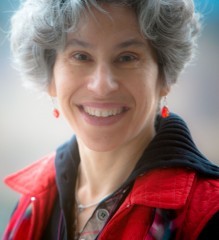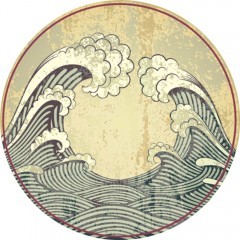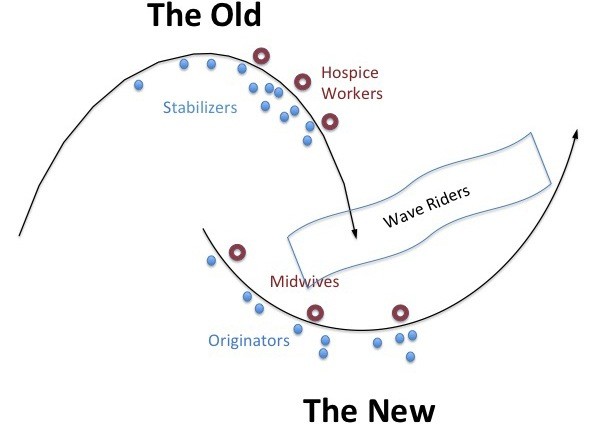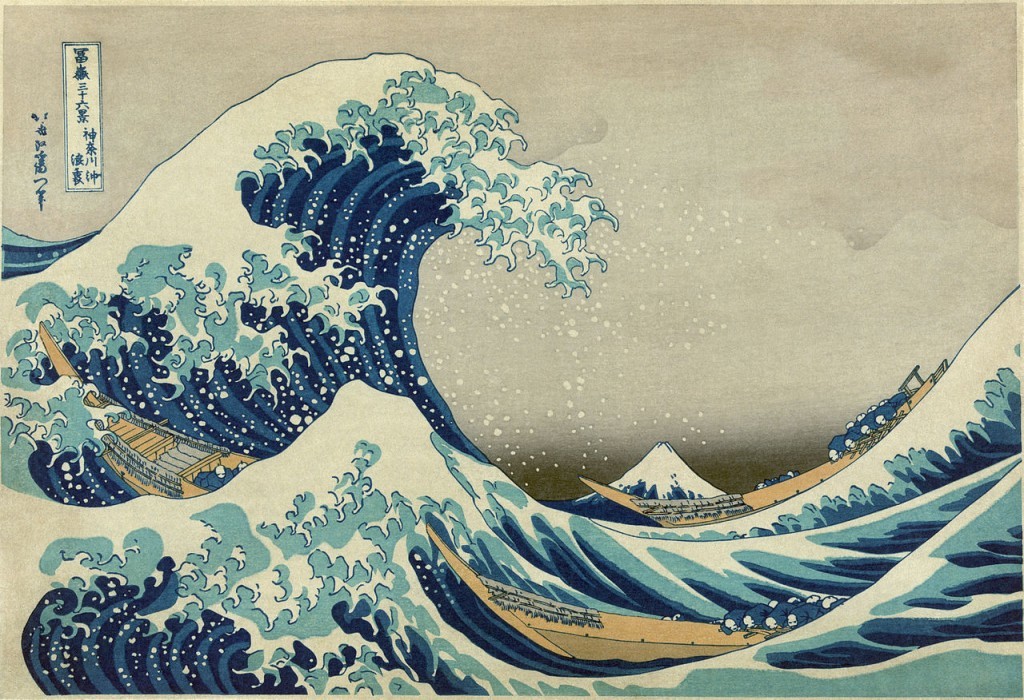Like a great wave, cultural stories carry us along, creating a coherent view of our world. For example, the phrase the “American Dream” evokes a story that has inspired generations to believe that no matter who they are, by working hard, they have the opportunity to succeed.
When such a narrative peaks and starts to decline, no longer living up to its promise, a new wave of possibilities begins to churn. Small, even invisible at first, some stories catch on and a new narrative wave forms as the old one dissipates.
As a new story grows strong enough to compete with the old story, some of us feel confused, betrayed, depressed, or lost. Others are elated and inspired. You may find your own or others’ actions disconcerting, frustrating, mysterious, or just plain nutty.
In a time of competing narratives, Berkana Institute’s Two Loops Theory of Change makes visible five roles that naturally emerge. The better you understand these roles, the better you can:
- See the value of all roles. If you thought you were on opposite sides, you can see that you are all part of the same story.
- Find where your own strengths and passions are and step in to the roles that are best for you.
- Support others to make useful choices that play to their strengths, and help them to be effective in their role.
- See what’s missing and if a role hasn’t been filled, you can take it on or recruit someone to get involved.
Adapted from Berkana Institute’s Two Loops Theory of Change
Roles That Maintain the Old While Inventing the New
1. Stabilizers focus on the current organization. At their best, they prevent collapse by keeping old forms stable until new forms have matured enough to carry us forward. They provide critical support from inside the organization during changing times. If they are not conscious of their role, their focus on protecting the old systems can keep them entrenched, blocking the new and vital from coming into its own.
2. Originators experiment with a range of ideas, from the hair-brained to the brilliant. Long before the old system peaks and begins to collapse, isolated experiments start appearing in the gaps that the old story never handled well. Originators see the world with new eyes, bringing passion, determination, and imagination to address their frustrations with the way things are and to bring their dreams about what’s possible to life.
These two roles are caught up in two primal, vital, and conflicting forces: maintaining the old and inventing the new.
Roles that Support the Transition
3. Hospice workers help us to mourn what is dying. Without the benefit of a formal role, cultural hospice workers do similar work for organizations and communities. A newspaper editor once told me, “That’s what I’m doing for my organization.”
Cultural hospice workers help the stabilizers, who are experiencing their way of life dying, to let go. Hospice workers also help those who are angry or frustrated by inflexible stabilizers to see other perspectives. Hospice workers make space for more compassionate responses. For example, they can put in context the actions of many stabilizers, who feel responsible for people who rely on the old system, the values that informed it at its best, and jobs that will be lost when it dies.
Like a metaphorical funeral, hospice workers help us all to move on by encouraging us to honor past contributions, to thank stabilizers for their work and sacrifices, and to notice values that still hold meaning. When stabilizers know their contributions have been appreciated and something essential – like enduring values — are still relevant, they are better equipped to transition. Sadly, they are least lovable and hardest to thank when they are most entrenched in protecting the old system. Hospice is tough work!
4. Midwives help originators to launch. Have you ever heard the painful and exhilarating cries of new birth? Cultural midwives lend a helping hand with funding, emotional support, contacts, good wishes even when ideas seem crazy, as well as providing an occasional garage to build a prototype. When brash originators offend us because they are determined to bring their visions to life no matter the cost, midwives help us see the gifts and possibilities in their vision.
Midwives connect originators with each other, providing much needed nourishment and encouragement as their ideas take shape. Midwives help the rest of us by illuminating the vital and vibrant activity that bubbles when most of us are fixated on the old system collapsing. As Peter Block observed in Community: The Structure of Belonging, big ideas start small, slow, and underfunded. By pointing us towards what is being born, midwives support the next wave to rise.
5. Wave riders assist us in transitioning between old and new stories. Part hospice worker, part midwife, and all storyteller, they assist us in seeing what endures from the past that still matters while embracing what has meaning in what’s new and emerging.
Have you ever gone back to somewhere familiar only to discover it is no longer what you expected? Wave riders help us understand the changing story, and make a mindset shift from who we were to who we are, and even to glimpse who we are becoming. They make visible the differences that matter, inspiring us with possibilities, assuring us with enduring values, and naming what’s emerging. By doing so, they bring something new into being.
The Two Loops Theory reminds me of the Great Wave off Kanagawa, a famous woodcut by Japanese artist Hokusai.
The old wave looks threating to the small boats, each at a different point in its journey. The new wave is just beginning to rise, carrying its passengers on their way.
The picture is a great reminder that the waves are always moving. Nothing stands still.
 Peggy Holman has helped explore a nascent field of social technologies that engage “whole systems” of people from organizations and communities in creating their future. In The Change Handbook, 2nd edition, she and her co-authors profile 61 change processes. Her award-winning book, Engaging Emergence: Turning Upheaval into Opportunity, dives beneath these processes to make visible deeper patterns, principles, and practices to guide us through turbulent times. These days, Peggy focuses on the intersection of journalism and civic engagement through Journalism that Matters, a nonprofit that convenes conversations to foster collaboration, innovation, and action so that a diverse news and information ecosystem thrives. She applies the ideas in this post to journalism on the JTM blog.
Peggy Holman has helped explore a nascent field of social technologies that engage “whole systems” of people from organizations and communities in creating their future. In The Change Handbook, 2nd edition, she and her co-authors profile 61 change processes. Her award-winning book, Engaging Emergence: Turning Upheaval into Opportunity, dives beneath these processes to make visible deeper patterns, principles, and practices to guide us through turbulent times. These days, Peggy focuses on the intersection of journalism and civic engagement through Journalism that Matters, a nonprofit that convenes conversations to foster collaboration, innovation, and action so that a diverse news and information ecosystem thrives. She applies the ideas in this post to journalism on the JTM blog.
















Peggy, thanks for sharing your guest post on Jesse’s blog. I’ve admired your work and contributions to the Change Handbook which is a great guide for those interested in whole systems change. Your post brings change down to the more personal level- I appreciate the reminder that change really is about the stories we tell, and our stories vary with the role we play related to each change.
Fay, Glad you find The Change Handbook useful. I see change as most effective when people discover what’s most personal is also universal. Imagine the power of sharing stories from our different roles to create a greater sense of the whole. In working with groups dealing with complex challenges, I have noticed a turning point when people experience themselves as part of a larger whole. They start acting as a social body, using their differences as a source of creativity.
It’s interesting to apply Peggy Holman’s theory to community mental health stories. I remember being a “midwife” back in the 1970s and 80s when we were building an alternative to state hospitals – bringing services to people with severe mental health problems in their own apartments. The “stabilizers” thought that only 24- hour care was adequate. We rode that wave successfully until the forces of change began to undermine it. Now we are in the midst of a second decade of decreased government funding for mental health services. Some days I am a discouraged stabilizer. But at other times there are hints of the new wave. “Best practices” fueled by the incredible power of data is one hint. If we really know what works and what doesn’t, can’t we really provide better treatment with fewer resources? I wish the “midwives” of the next wave the very best!
Betsy, I love your story of being a midwife earlier in your career and a stabilizer now, cheering on a new generation of midwives. Great example that we may ride a wave through its life.
Thanks for this great post which itself is a wave rider offering a new way of looking at change. I am serving on two transition teams at the moment and will reevaluate our roles and skills using this model. I prefer to midwife and realize we may need to be sure we have enough healthy hospice workers. I will be forwarding this to my teams.
Marye Gail, So glad you can put these ideas to use right away. The editor I mentioned dealt with declining circulation and layoffs for years while keeping a sense of purpose alive in the newsroom and ensuring the news got out every day. It’s takes plenty of self-care to stay with it. Like hospice workers who work with people, it is a sacred role to support an organization to die — or change — well.
Thanks for this great post Peggy. Reminds me also of the Panarchy ecocycle, and also the book Transitions. The end of the old, and the emergence of the new. Possibility and change. In my work with Denise Easton on how we respond to disruptive experiences, we use the metaphor of the surfer extensively. How we can learn to ride and respond to the ever-changing waves.
Bruce, thanks for affirming the notion that surfers are a great metaphor for handling the unexpected. Please say hello to Denise for me.
I just heard a report on National Public Radio that was a great example of a wave riding story. It was on snowboarding at the Olympics. What could have been a “woe is me no Americans on the podium” story instead honored the past and focused on the future. It spoke of Shaun White, a creator turned stabilizer, who, even with his personal defeat, applauds the transition to a new era. It highlighted a rising originator. It acknowledged the US role in launching snowboarding and celebrated the excitement of it going international. Kudos to the reporter, Robert Smith, for telling a story of changing times in a way that valued everyone and leans into an emerging story. http://kuow.org/post/snowborder-shaun-white-will-leave-sochi-without-medal
(Note: The headline and description of the story has of a “poor us” flavor. The story does not. That just makes the contrast in approaches more apparent.)
What a wonderful illustration of what these roles look like in real life! Thanks for sharing this, Peggy. It’s interesting to see how an individual can change roles, and I especially appreciate your showing how the waver rider helps us make meaning of events.
Jesse, I was particularly excited about this story because it modeled a style of reporting that can help us navigate changing times. Imagine if issues like health care or education were covered in this way. It would help more of us transition between cultural narratives.
Thanks for this helpful post and framing of how to see various roles in these larger changes. I wasn’t sure if I fall into the midwife or wave rider. I am a consultant working in this emerging area of using networked ways of working, across organizations/sectors, to address large scale systems changes, such as transitioning to local food systems or moving off fossil fuels to renewables/energy efficiency (www.ndcollaborative.com). I work as a coach/guide with innovators inventing/implementing/experimenting these networked approaches and also write and teach about what I’m seeing and share the stories among my clients and networks, and participate in networks/communities of practice with other people doing this work. Feels like this work falls into both categories.
One way to think about the roles is who are you supporting? Midwives are focused on the birth of the new. While that no doubt involves some work with those still immersed in the current worldview, a midwife’s priority are the originators and what they are creating. Sounds to me like that’s your primary focus. Wave riders focus on the transition between world views, bringing along the broader constituency by creating or at least pointing out mental models that provide paths into the new world view.